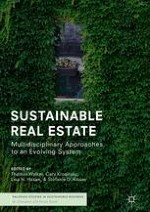This edited collection broadens the definition of sustainable real estate based on industry trends, research, and the Paris Climate Agreements. Discussions encompass existing and new buildings throughout their life cycle, the financing of their development and operations, and their impact on the surrounding environments and communities. This broader perspective provides a better understanding of the interconnected nature of the environmental, societal, communal, political, and financial issues affecting sustainable real estate, revealing the wide-ranging impact of practitioners' decisions on the sustainable real estate system. Bringing together carefully selected articles from leading global academic and practitioner experts from urban planning, design, construction, and finance, this collection brings to light new opportunities and innovative transdisciplinary solutions to as-yet unresolved problems.
